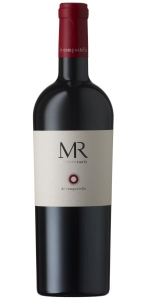Wine from Stellenbosch

Located in South Africa, Stellenbosch is a very important district. Just 30 miles east of Capetown, Stellenbosch is the second oldest settlement in the country. The wine producing wards are Simonsberg-Stellenbosch, Jonkershoek Valley, Bottelary, Banghoek, Dvon Valley, Papegaaiberg, and Polkadraai Hills.
Stellenbosch was nicknamed, “The City of Oaks,” because of the oak trees that were planted by Simon van der Stel who founded Stellenbosch and was the mayor of Cape Town. The well-drained terrain is hilly with the majority of vineyards located at 330 Feet above sea level. The Cape Fold Mountain range shelters the valleys. The first wine vineyards were planted by German settlers, known as Huguenot, in 1690.
The climate in Stellenbosch is Mediterranean and perfect for viticulture. The winters are rainy, cool, and occasionally windy with daytime temperatures averaging about 61°. Occasionally snow flurries occur two or three times a year. Autumn and spring are considered shoulder seasons with average temperatures at the 68° mark. Summers are generally dry and hot.
The variety of soils in Stellenbosch range from decomposed granite on the hillsides, dark, alluvial soils that drain well in the valley. The combination results in high-quality red wines. Notable reds in the region include Shiraz, Pintoage, Merlot, and Cabernet Sauvignon. Prominent white wines include Sauvignon Blanc, Chardonnay, and Chenin Blanc.
Raats MR Mvemve Raats de Compostella is made from 63% Cabernet Sauvignon, 17% Cabernet Franc, 12% Malbec, 6% Petit Verdot, 2% Merlot
The name de Compostella (meaning “field of stars” or “compilation of stars”) was chosen to reflect the fact that each component is crafted to stand alone as a world class varietal wine. The wine exhibits a deep, dark ruby color. Blackcurrant and black cherry fruit with hints of violets, cedar and cinnamon are revealed on the nose. The palate is rich and complex with mineral, blackberry fruit and dark chocolate on the finish. The five Bordeaux varietals harmoniously convene in this consistent, linear flavor profile that is polished with a well-defined finish.
Review:
he 2020 De Compostella is composed of 30% Cabernet Franc, 28% Cabernet Sauvignon, 21% Malbec, 16% Merlot and 5% Petit Verdot. Beginning with a focused, juicy and complex nose of dark red fruits, the wine has impeccable balance between oak, fruit and earthy floral tones. Full-bodied and with succulent acidity, the palette offers a firm frame of fine-grained tannins, while the fruit profile makes way for elegant earth and notes of crème de cassis sway with subtle flavors of sage and spiced plum. The red blend continues to somersault and reveal its complexities over the long-lingering and ever-evolving finish. Be patient with this exceptional wine
-Wine Advocate 95 Points
- back
Selected Options
Regions
Categories
Pricing
Countries
Regions
Grape Types
Wineries
Organic/Free Shipping
Johann Michel Cornas Cuvee Jana is 100% Syrah.
Black raspberry aromas, licorice, sizzled bacon and smoke. Elegant and pure with depth and well-integrated tannins.
Jana is the name of Johann and Emmanuelle's daughter.
Manual harvest, selection of the grapes from the "Chaillot" parcel, full clusters, fermentation in tanks for 3 weeks, daily remontage and pigeage. Malolactic fermentation in oak barrels and aging on the lees for 12-18 months in barrels (new old barrels) The average age of the vines is 11 years. Yield: 25 hl/ha
Review:
"Dark purple. Highly perfumed, oak-spiced black and blue fruits, incense, vanilla and potpourri on the hugely perfumed nose, along with hints of licorice, smoked meat and mocha. Stains the palate with concentrated, spice-laced blueberry, cassis, cherry-vanilla and espresso flavors that turn sweeter as the wine opens up. Broad, polished tannins add shape to a strikingly long, smoke- and spice-driven finish that strongly echoes the floral and blue fruit notes. - Josh Raynolds"
- Antonio Galloni's Vinous (December 2022), 97 pts
Ferren Chardonnay Sonoma Coast is made from 100 percent Chardonnay.
The Sonoma Coast bottling is a blend of barrels from Ferren's single vineyard offerings; Lancel Creek, Silver Eagle, Volpert, and Frei Road Vineyards. The wine is always somewhat more approachable early in its life as less new oak is used in the blend. Pure and translucent fruit is the hallmark of this cuvée. Citrus, quince, sea spray, and minerals are buoyed by refreshing acidity and a seamless finish.
Review:
A nuanced, tangy, mouthwatering and approachable wine that is both complex and very drinkable. The aromas are delicate, lifted and fresh, with oyster shells, lime zest, white flowers and chamomile. The palate is super fresh, layering salinity, richness and a long finish. Medium- to full-bodied. Drink or hold
-James Suckling 98 Points





